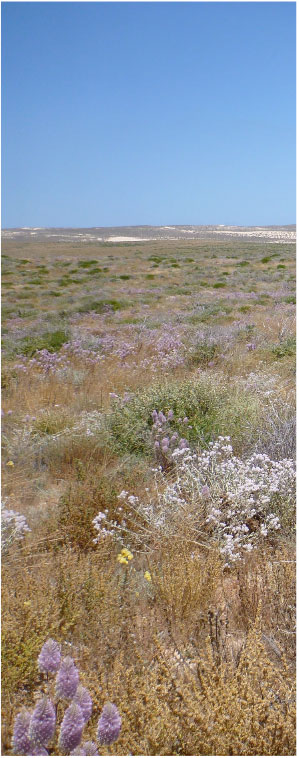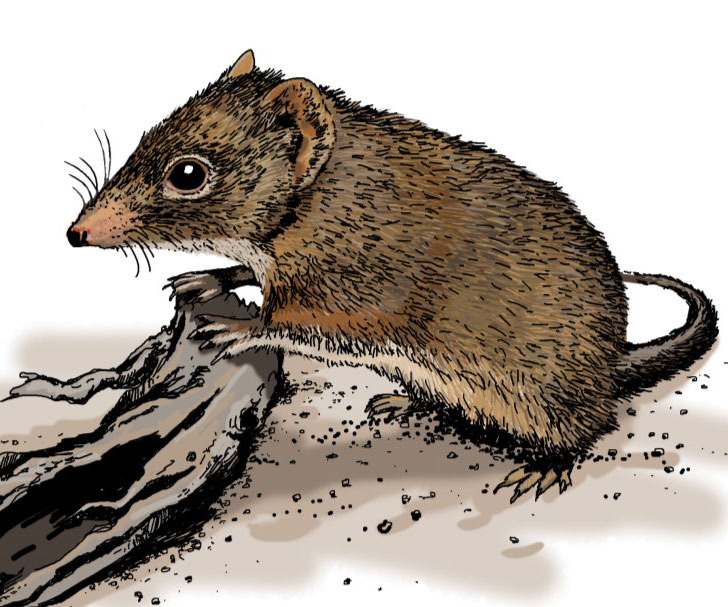Dibbler
Dibbler
Parantechinus apicalis
Description
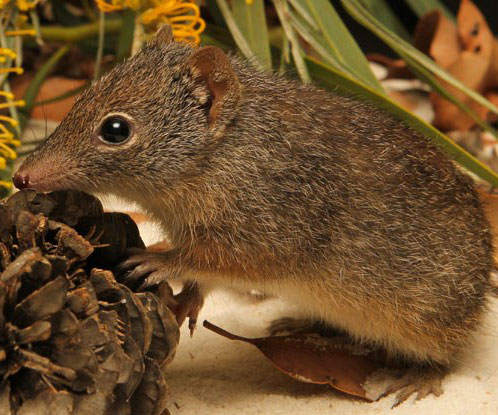
| Head-body 140 – 145mm |
Tail 105 – 115mm |
Weight 40 – 125g |
The dibbler is a small marsupial with coarse brownish-grey fur speckled with white.
It has distinctive white rings around the eyes and a tapering hairy tail.
Diet and habitat
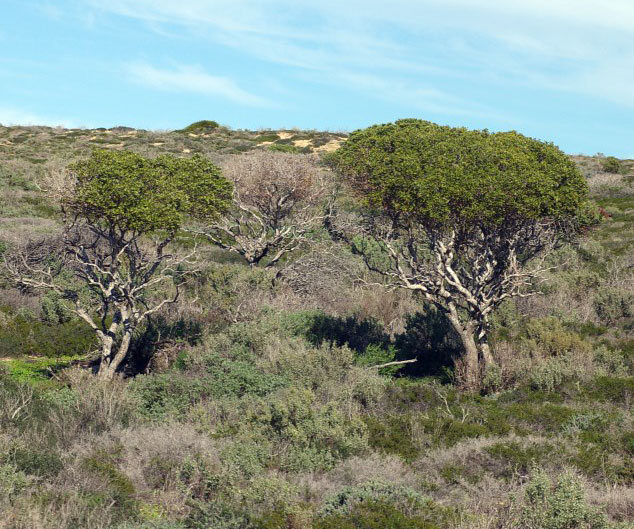
Dibblers are most active at dawn and dusk and their main habitat is dense heath with lots of leaf litter.
These small carnivores feed mostly on ground-dwelling insects and other invertebrates. Sometimes they eat small lizards, birds and mammals. Dibblers also eat berries and lick nectar from flowers.
Breeding
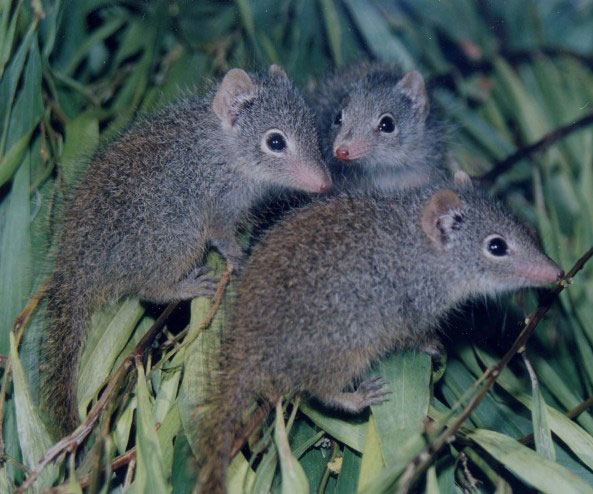
| Gestation 44 – 52 days |
No. young 6 – 8 |
Weaned 3 – 4 mths |
The dibbler breeds once a year during autumn. A mating session may continue for several hours.
Young are 2mm long when born and females can carry as many as eight at one time in their pouch!
Distribution
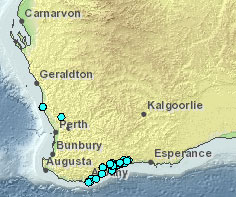
Dibblers were once widespread in south-west WA. Believed extinct in early 1900s but found in 1967 on the WA south coast, and later on two WA islands. New populations have also been established through captive breeding programs. Dibblers will be returned to Dirk Hartog Island as part of the Return to 1616 ecological restoration project.
Status

Dibblers are threatened by habitat loss caused by land clearing, die-back disease and wildfires. Predation by introduced predators is also a threat.
Fact sheet
SHARK BAY
World Heritage
